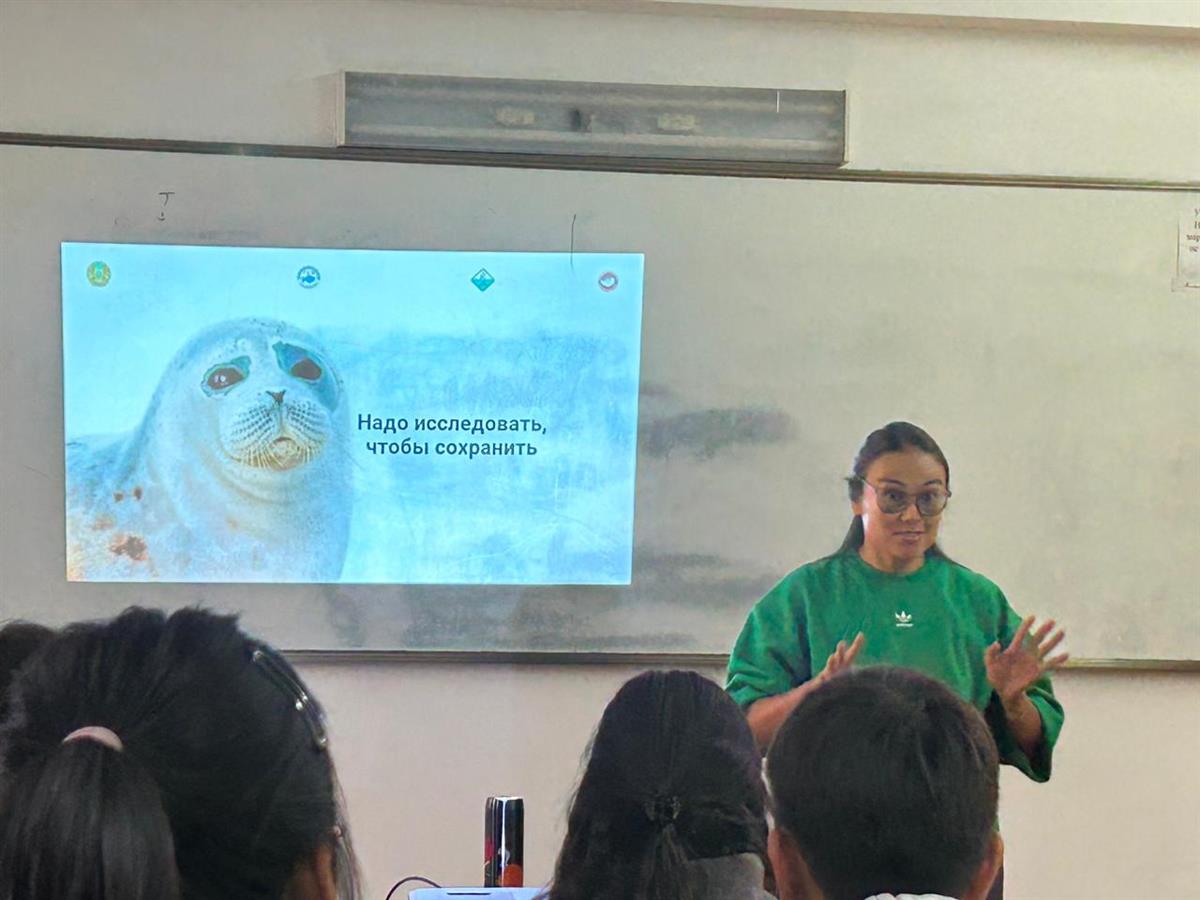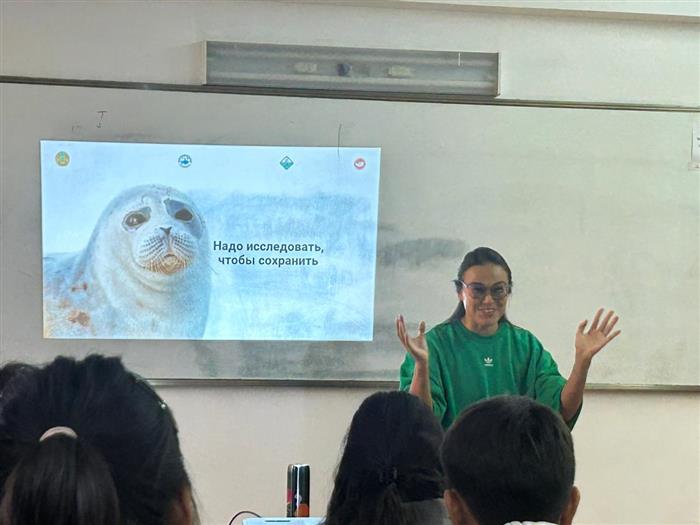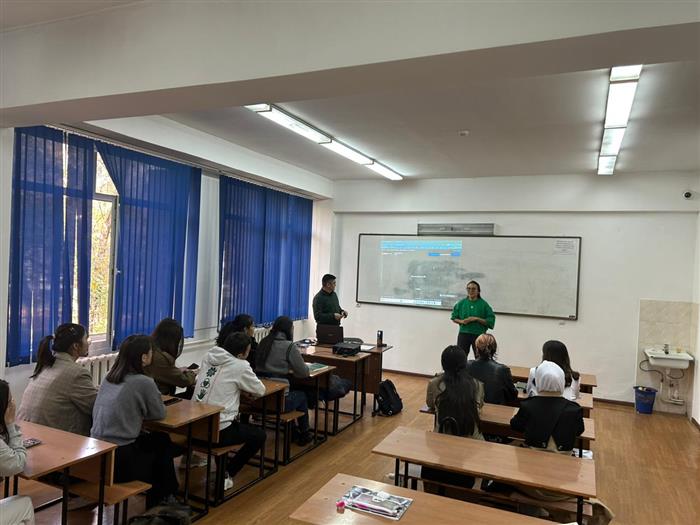"It is necessary to investigate in order to preserve"
Views: 487

On 19.10.2023, at the Department of "Biodiversity and Bioresources", a 1st-year doctoral student A.M. Baymukanova held a scientific seminar on the topic "It is necessary to investigate in order to preserve". The seminar was attended by doctoral students, undergraduates and students of the department. Asel Baymukanova, a doctoral student, shared her own scientific results of research on Caspian seals in the Kazakh part of the Caspian Sea. The Caspian seal (Pusa caspica Gmelin, 1788) is the only marine mammal and endemic that lives throughout the Caspian Sea, from the coastal areas of the northern Caspian to the shores of Iran. Most of the seals concentrate on the north-eastern part of the sea, forming large deposits there, which persist until the ice age. The most crucial period of the seal's life takes place here, because it is biologically connected with the ice on which it reproduces and feeds its cubs, and also spends most of the molting period. At the beginning of the 20th century, the number of the Caspian seal was about 1 million individuals. The population of the Caspian seal has been in a depressed state since the mid-80s, and the number of seals has decreased to 450 thousand heads, currently the population is estimated at about 100-170 thousand individuals throughout the Caspian Sea. At the same time, special attention should be paid to the fact of a decrease. The number of seal populations has decreased up to 10 times since the beginning of the last century to the present. The reasons for the reduction in the number of rookeries and the number of seals are human economic activity. The most important of them is commercial hunting during the last century, the reduction of fish stocks, the deterioration of the habitat as a result of climate change and getting into fishing nets. Other factors include periodic outbreaks of viral diseases, as well as water pollution as a result of industrial activities in the past and present. Anthropogenic factors pose a threat to natural reproduction, drives seals away from potential rookery sites, and leads to the death of seals. This species not only serves as an indicator of the ecological state of the Caspian Sea, but is also included in the List of Threatened Species in Kazakhstan and neighboring Caspian countries. In this regard, research and conservation measures for the Caspian seal are becoming important.
Responsible for the seminar:
"Fisheries and industrial fisheries" 1st-year doctoral student Baymukanova A.M.


Candidate of Biological Sciences, senior lecturer Kozhabaeva E.B.








